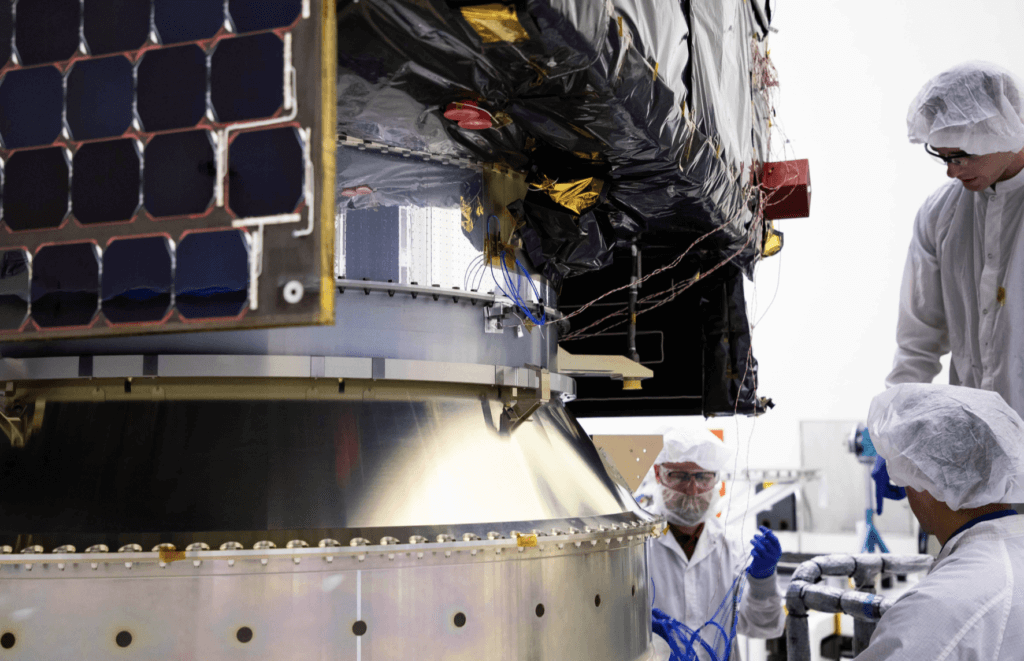WASHINGTON — The launch of a U.S. Space Force mission known as USSF-12 has been put on indefinite pause, for reasons that are not being disclosed.
USSF-12 was planned as a two-satellite mission that United Launch Alliance was preparing to launch in April on an Atlas 5 rocket. The primary payload is the geosynchronous Wide Field of View mid-size satellite equipped with a missile-warning sensor. A rideshare spacecraft was expected to fly an unspecified number of small satellites for military experiments.
ULA on March 9 announced that USSF-12 is being postponed “due to a customer request” but did not elaborate further. The Space Force confirmed March 12 that the launch of USSF-12 is being taken off the schedule for now.
“We have no specifics to offer at this time on the exact cause for the delay, but we are working to get USSF-12 back on the launch schedule as soon as possible,” a spokesperson for the U.S. Space Systems Command said in a statement to SpaceNews.
The manufacturer of the Wide Field of View satellite, Boeing’s Millennium Space Systems, in a statement March 14 said the payload was delivered last month to a launch processing facility at Cape Canaveral, Florida. The Atlas 5 rocket remains at the Cape ready to launch.
The Wide Field of View was shipped from the company’s facility in El Segundo, California, and “was delivered safely on February 2,” the company said in the statement.
“This satellite was procured by the Space Systems Command to serve as a testbed for Wide Field of View technologies in geosynchronous orbit for the missile warning mission, and as an enabling asset for the missile tracking and missile defense missions,” the company said.
The delay conceivably could be related to the secondary payload but neither the Space Systems Command nor Millennium Space would comment on that.
Wide Field of View will be put back in storage until the Space Force decides how to move forward. “We will share additional information regarding a new launch date when it is available,” the spokesperson said.
Wide Field of View has been in development since 2016. It was designed to test advanced technologies for missile warning, or the early detection of ballistic missile launches. It is not part of a missile-warning constellation but a stand-alone experiment. The satellite carries an infrared sensor made by L3Harris Technologies.
ULA received a contract in 2018 to launch USSF-12. The launch was initially targeted for 2020, and last year was put on the calendar for early 2022.

